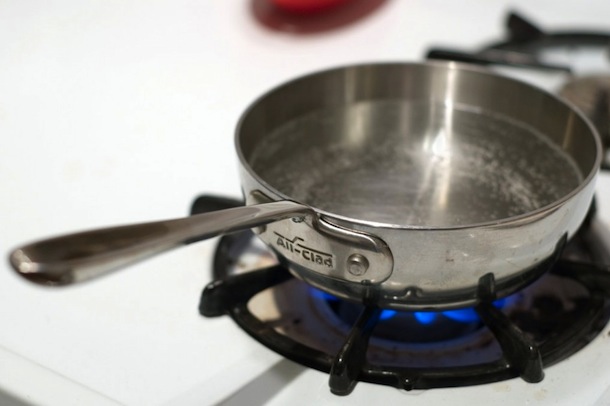At What Temperature Does the Human Body Start to Cook
The human body is a remarkable machine, capable of handling a wide range of environmental conditions. However, there are certain temperatures that can have a profound impact on the body’s ability to function correctly. As a rule, the human body temperature ranges between 36.5°C and 37.5°C (97.7°F and 99.5°F). Any temperature above or below this range for an extended period can cause damage to major organs and, in severe cases, lead to death. In this article, we will explore the impact of extreme temperatures on the body, why the human body cooks at high temperatures and what precautions you can take when exposed to high heat levels.
Understanding Heat
Heat is a form of energy, which causes substances to become warmer when it’s transferred from one object to another. In terms of our bodies, heat comes in three different forms: radiant, convective and conductive. Radiant heat comes from the sun or any other source that emits heat waves. Convective heat results from air currents around the body while conductive heat results from direct contact with a warm surface such as sand or metal.
Impact of Heat on the Body
The effects of extreme temperatures on the body depend on several factors that include duration of exposure and one’s physical condition. At moderate levels, heat causes dehydration and can lead to dizziness, nausea and fatigue. More extreme exposure can affect vital organs in the body leading to heat exhaustion and eventually heatstroke.
Symptoms of Heat Exhaustion:
- Excessive sweating
- Cool moist skin
- Nausea or abdominal cramps
- Dizziness or lightheadedness
- Muscle weakness or cramps
- Headache
- Fainting
Symptoms of Heatstroke:
- High body temperature (above 103°F)
- Red, hot and dry skin with little to no sweating.
- Rapid pulse and breathing rate.
- Headache
- Nausea or vomiting
- Dizziness
- Loss of consciousness
Factors That Affect Thermoregulation
The human body’s ability to regulate temperature is influenced by several factors such as age, hydration, physical exertion levels and clothing materials worn in different environments. Also, environmental factors like humidity and altitude all play a critical role in thermoregulation and maintaining the body’s internal temperature range.
Understanding Hyperthermia
Hyperthermia refers to a condition when the body’s core temperature rises above 40°C (104°F). Hyperthermia can occur because of prolonged exposure to high temperatures or due to an underlying health condition leading to impaired thermoregulation function. It can be classified into three stages: mild, moderate and severe hyperthermia.
Mild Hyperthermia:
Mild Hyperthermia can occur when the core body reaches 37.5-38.5 °C (99.5-101.3 °F). It causes minor discomforts such as muscle cramps, dizziness, and increased thirst.
Moderate Hyperthermia:
If the core body temperature rises above 38.5-40.0 °C (101.3-104 °F), the moderate stage of hyperthermia can occur. This stage presents life-threatening risks such as heat stroke, dehydration, tachycardia and significant organ damage to the kidneys and liver.
Severe Hyperthermia:
When the core body temperature surpasses 40.0 °C (104°F), severe hyperthermia occurs. It represents high risk for cardiac arrest and catastrophic damage to multiple systems such as the liver, kidney, and brain.
Cooking the Human Body – The Science Behind It
Humans can begin to cook when the body temperature reaches 41°C (105.8°F).When heat exposure leads the human body’s internal temperature to rise above this threshold level, blood proteins start denaturing causing cells to break down leading fluids to leak from blood vessels causing swelling in tissues.
Case Studies
Death Valley National Park Case Study
In recent years there have been several reports of hikers dying due to exposure to high temperatures after becoming lost or stranded in Death Valley National Park’s desert conditions. In 2018 Tragedy struck when a Belgian woman died after her vehicle broke down in temperatures reaching up to 120°F (48°C) and she attempted to hike out without proper supplies or clothing.
This case study serves as a reminder that ignoring warnings regarding environmental conditions can lead to severe medical consequences including fatality.
Heatwave across Europe Case Study
A heatwave was recorded in many European countries between late June till late July 2022, records were shattered as temperatures increased up to 44°c, affecting millions of people with more than thousands hospitalized due to overheating-related ailments. Many governments around the region issued various heat-wave warnings.
It is important to note that everyone including healthy individuals can be affected by extreme temperatures, and ignoring safety recommendations can have long-term medical consequences.
Precautions to Take When Exposed to High Temperatures
To avoid the risks associated with high heat exposure, drink plenty of fluids containing electrolytes when outside for prolonged periods. Experts recommend a water intake of at least one liter per hour during hot weather conditions.
Maintain a proper diet during heat waves, eat lighter meals. Avoid consuming alcohol or beverages with caffeine that can increase dehydration.
In addition, be sure to avoid extended periods exposed entirely to direct sunlight, especially in locations with potentially high temperatures. Plan outdoor activities when temperatures are cooler, or consider indoor exercises like going to a gym or swimming pool.
Conclusion
It’s essential to remain aware and cautious when exposed to high heat levels and taking precautions such as hydration and avoiding prolonged exposure can prevent mild discomforts from escalating into severe and life-threatning illnesses. By acknowledging environmental conditions, you improve your chances of staying safe and healthy.
What happens to the human body at high temperatures?
The human body is made up of millions of cells and functions optimally at a specific temperature range between 36.5°C to 37.5°C. When exposed to high temperatures, above 41°C, the body’s heat regulatory mechanism starts to break down, leading to dangerous health conditions such as dehydration, heat exhaustion, and heatstroke.
How does cooking affect the human body?
Cooking is a term primarily used in food preparation to make it safe for human consumption by killing harmful bacteria and making it easy to swallow and digest. On the other hand, cooking the human body, which usually occurs due to exposure to extreme temperatures above 55°C, leads to thermal damage to internal body organs that may cause severe burns or death.
At what temperature does the human body start to cook?
The human body can start cooking at various temperatures depending on factors such as age, body weight, hydration level, type of clothing worn, and duration of exposure. However, studies suggest that internal human organs may suffer irreversible damage above 48°C (118°F), while visible burns occur in less than a second at temperatures above 60°C (140°F).
What are the signs that the human body is starting to cook?
Exposure to extreme temperatures that start cooking the human body leads to several physiological symptoms. These may vary depending on individual tolerance levels and include confusion, headache, dizziness, fatigue, rapid pulse rate, low blood pressure, nausea/vomiting and loss of consciousness. If you experience any of these symptoms after an exposure incident seek medical attention immediately.






